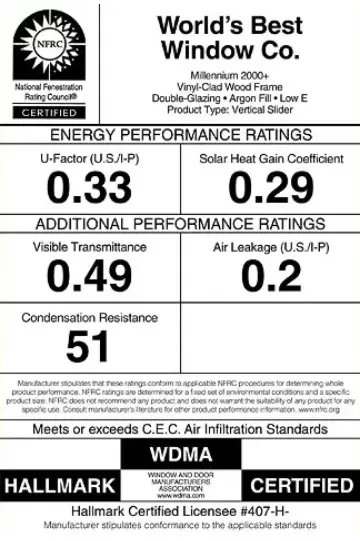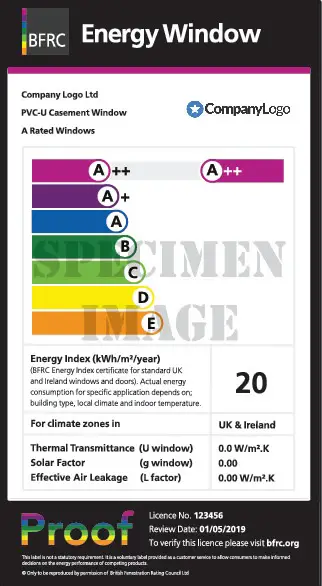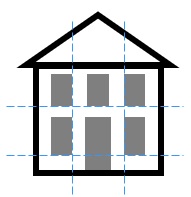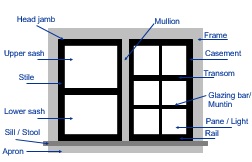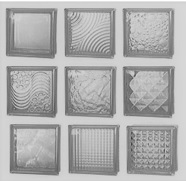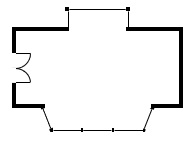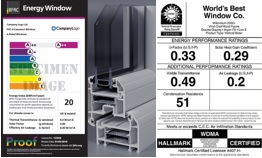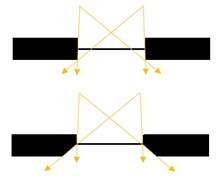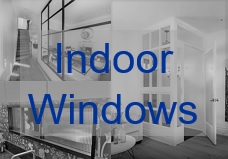- Home
- Window Design
- Window Efficiency
Window Efficiency
Homes in most places in the world need heating or cooling during some period of the year. It takes energy to heat and cool our homes and it makes sense to conserve the temperature inside our homes as best we can.
The window efficiency of our windows will contribute to the comfort of our homes and keeping the energy costs cost down as part of an overall insulation strategy which should also include the roof, floors and walls.
Let's start by looking at the different ways a window tranfsers heat.
How do windows transmit heat?
The different parts of a window transmit heat in different ways.
Solar gain through glass
Solar gain only works in one direction - from the outside in.
The sun's rays are made up of both light and heat.
When the sun shines on glass some of the heat energy (infrared) is reflected and some passes through the glass into your home.
In addition to this some of the infrared is absorbed by the glass and then conducted into the home.
Radiation through glass
A pane of glass absorbs heat from inside the room and conducts it to the outside. If there is double or triple glazing the heat is transferred by convection across the air gap onto the next pane of glass.
The majority of heat is lost via the conduction process in the glass rather than the convection through the air gap.
This process works in either direction depending on whether the temperature outside is cooler or warmer than inside.
Conduction through frame and spacer bars
Window frames can be made out of different materials such as wood, metal or PVC. Wood and PVC perform at about the same level (provided PVC frame is well made) and are better than metal by quite a margin.
If the frames are solid the heat is transmitted purely by conduction, if there are some hollow parts of the frame then there is some convection at work as well.
Again, this process works in either direction depending on whether the temperature outside is cooler or warmer than inside.
Air leaks through openings
If the openings of a window are not well sealed the air can just travel right through in the form of a draft. There can also be air leaks where the window frame is fixed into the wall.
Nothing will loose heat quicker than an air leak from the inside out or vice versa.

Window efficiency in relation to cost savings and comfort
I just wanted to add a quick note here about the perceived advantages of good window efficiency. The first thing that usually springs to mind is that having energy efficient windows will save you money.
This is of course true but it will take more years that you think (like more than 50) to save the amount of money in energy costs that the windows will cost you in the first place.
So, what's the point of paying for energy efficient windows?
The main immediate benefit is in the comfort of your home. Temperature comfort is achieved by the surfaces of your home (walls, floors and windows) being as close to the air temperature of your home as possible.
If you have energy efficient windows the temperature difference between the inner panes of glass and the air temperature comes way down. The heat stays in for longer and there's no drafts. It's a lot more comfortable.
So when you're buying new windows you're buying comfort first and foremost.
Also, let's not forget the environment. Using less energy is a good thing in general.
So when you're out shopping for your windows what do you need to look out for?
Most countries have a window efficiency rating system. Here are a few of them...
Window efficiency ratings
In the US the National Fenestration Rating Council tests the window efficiency and the results are displayed on an NRFC label.
In the UK the British Fenestration Rating Council (BFRC) decides window efficiency ratings in a slightly different way and similarly issues a BFRC label.
If you look at both of the labels you can see several factors in common:
- Thermal transmittance (U-factor or U-value) - the lower the number, the better the window keeps the temperature steady inside.
- Solar factor / Solar heat gain (G-factor) - the lower the number, the less eat gain. For locations that require cooling during the summer (eg US) a lower number is desireable. For locations that require little cooling (eg UK) the solar gain is seen as a positive so the higher the number the better.
- Air leakage (L-Factor) - the lower the number the better the window.
In the UK these factors are combined in a calculation to provide an overall index.
Here are the window efficiency ratings services for a few other countries.
So, let's go into a bit more detail about window efficiency and find out more about what those factors on the labels mean...
What do the window efficiency factors measure?
U-factor window efficiency
The U-factor is the rate of transfer of heat and is a measurement of the radiation through the class and the conduction through the frame and spacer bars.
In fact each separate part of the window glass, frame and spacer bars will have it's own U-value.
Make sure that your window supplier is quoting the U-value for the whole window including both the panes and frame. The U-value for the glazed part of a double glazing window is likely to be lower (ie better) than the overall value including the whole frame.
Remember... The lower the U-value the better.
G-factor window efficiency
The G-factor (or solar gain coefficient) is a ratio of how much of the sun's heat will pass through a window. It measures the solar gain method of heat transfer we talked about above.
Again, make sure your supplier is quoting the G-factor for the whole window and not just the glass.
The G-factor has a range from 0 to 1.
- If you want to take advantage of heat gain, the higher the G-factor the better.
- If you want to avoid heat gain, the lower the G-Factor the better.
L-factor window efficiency
The L-factor measures how much air will leak through the window frame.
The lower the L-factor the better.


